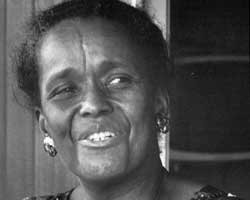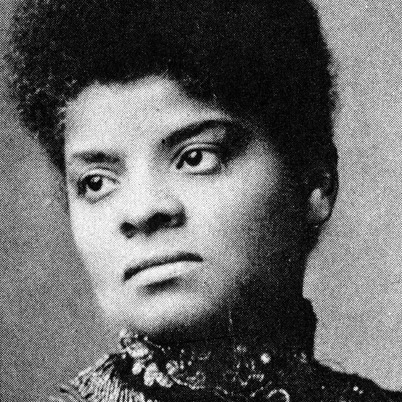-December 13, 1903- December 13, 1986
-Civil rights and human rights activist beginning in the 1930s. She was a behind-the-scenes activist whose career spanned over five decades.
-As a girl, Baker listened to her grandmother tell stories about slave revolts. As a slave, her grandmother had been whipped for refusing to marry a man chosen for her by the slave owner.
-Baker attended Shaw University in Raleigh, North Carolina, graduating as class valedictorian in 1927 at the age of 24. As a student she challenged school policies that she thought were unfair.
-During 1929 – 1930 she was an editorial staff member of the American West Indian News, going on to take the position of editorial assistant at the Negro National News.
-She worked for the Worker’s Education Project of the Works Progress Administration, where she taught courses in consumer education, labor history and African history.
-Baker immersed herself in the cultural and political milieu of Harlem in the 1930s. She protested Italy’s Invasion of Ethiopia and supported the campaign to free the Scottsboro Defendants in Alabama, a group of young black men accused of raping two white women.
-She also founded the Negro History Club at the Harlem Library and regularly attended lectures and meetings at the YWCA. She befriended the future scholar and activist, John Henrik Clark and the future writer and civil rights lawyer, Pauli Murray, and many others who would become lifelong friends.
-Her emphasis on a grass roots approach to the struggle for equal rights influenced the success of the modern Civil Rights Movement.
-In 1938 she began her long association with the NAACP. Baker was hired in December 1940 as a secretary. She traveled widely, especially in the South, recruiting members, raising money, and organizing local campaigns. She was named director of branches in 1943, making her the highest ranking woman in the organization.
-When the opportunity arose in 1946 to return to New York City to care for her niece, she left her position with the national association, but remained a volunteer. She soon joined the New York branch of the NAACP to work on school desegregation and police brutality issues, and became its president in 1952.
-In January 1957, Baker went to Atlanta, Georgia to attend a conference aimed at developing a new regional organization to build on the success of the Montgomery Bus Boycott. After a second conference in February, the SCLC was formed.
-She was co-organizer of the 1957 Prayer Pilgrimage which brought thousands of activists to Washington D.C.
-On the heels of regional desegregation sit-ins led by black college students, Baker persuaded the SCLC to invite southern university students to the Southwide Youth Leadership Conference at Shaw University on Easter weekend. At this meeting the Student Nonviolent Coordinating Committee (SNCC) was formed. The SNCC became the most active organization in the Delta, and it was relatively open to women.
-From 1962 to 1967, Baker worked on the staff of the Southern Conference Education Fund (SCEF), which aimed to help black and white people work together for social justice.
-In 1972, she traveled the country in support of the “Free Angela” campaign demanding the release of Angela Davis.
-In 2009, Ella Baker was honored on a U.S. postage stamp.







